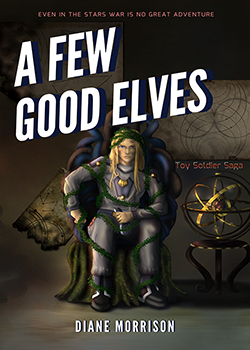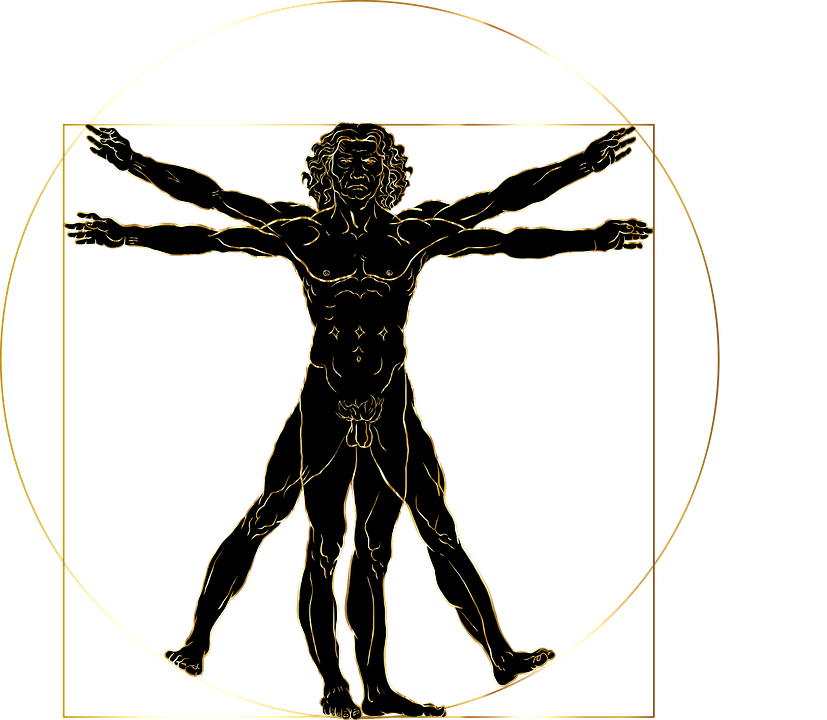Human
Basic Information
Anatomy
As dirtsiders, humans are most numerous on most worlds. Thus, humans are the meter by which the other races are measured. They are “average” in all aspects, height, weight, visual acuity, auditory capability. Anatomically, humans have two arms, two legs, one head with two eyes, two ears, one nose, and one mouth, and no tail. They are the species by which the term “humanoid” was coined, and generally look like big hairless primates.
Genetics and Reproduction
Genetically, humans are homo sapiens, and thus crossbreeding is very common. Though individually, some races may frown upon inter-species relationships, all of space follows the same philosophy, everything fits in somewhere, and if you don’t fit in where you are, leave. So, of all the crossbreeds, humans are the most common. Reproductively, humans gestate in a matter of 240 days or so, and are about 19.5 inches (49.5 cm) in length when born, and roughly 7.3 lb (3.3 kg) in weight at birth.
Growth Rate & Stages
For the first six months of their life, humans are fairly helpless. Incapable of seeing more than a few feet (a meter or two), and not possessed of the faculties to feel much for fear of an outside source, infant humans, are completely reliant upon their parents (both, ideally, but one if the other is not available), for the first six months of their life. Once the ability to motivate oneself is realized, independence will follow, and a human child is torn, at this point, between newfound freedoms, and the safety of its mother. Humans reach adolescence between nine and eleven, and they finish full development at about age 25.
Ecology and Habitats
Ecologically speaking, humans will dwell close to water, and preferably with an abundance of food sources. A tool using species, humans possess few natural weapons, but compensate with vast intelligence and reasoning power. Ecologically, their intelligence puts them as an apex predator, though humans are omnivorous.
Dietary Needs and Habits
Humans are omnivores and show a wide variety of eating habits and a propensity to eat just about anything.
Biological Cycle
Biologically, both males and females of the human species become fertile between the ages of nine and 13, though they are not mentally or emotionally mature enough to breed for a few years after that. Like most mammals, males of the human species are constantly fertile after puberty and can impregnate many females, but females are fertile only for about one week in every month after puberty.
Additional Information
Social Structure
Social structure varies wildly among humans of different cultures. In fact, it is widely debated as to whether or not any part of social structure is inherent in a rational species. The argument between nature and/or nurture. Suffice it to say, that social structure, if any is inherent at all, is mostly a matter of culture. Humans have a good deal of sexual dimorphism, with adult male humans
Facial characteristics
When compared to other primates, humans have average sized eyes and ears, big noses, and small mouths.
Geographic Origin and Distribution
Humans are not the most common species in space, but they are common enough to be found almost anywhere.
Average Intelligence
The other sentient races use humans as the base. As far as intelligence goes, humans are the stick by which other races are measured.
Perception and Sensory Capabilities
To say that humans have average perceptive abilities, is saying that they are not outstanding in anything. Their perception and sensory capabilities are completely unremarkable. Their extrasensory capabilities, however, are a different story and they show a greater share of psionic beings than any other non-psionic race. Furthermore, psychics, and those who use psychic magic are also very common, comparatively.
Civilization and Culture
Naming Traditions
Naming traditions are a matter of culture, and nothing among them is universal to humans.
Major Organizations
The Order of Light
The Knights of Cor Maden
The Knights of Cor Maden
Beauty Ideals
Ideals of beauty vary from culture to culture, and from era to era among humans, and nothing is a universal beauty ideal.
Gender Ideals
Gender ideals are cultural, and vary greatly between Inhydean matriarchs, and Andurani patriarchs.
Courtship Ideals
The ideals of courtship are something that have plagued mankind for at least the past 100,000 years, and what passes for an ideal courtship vary not only between culture to culture, but even from family to family, and in some instances from sibling to sibling. Learning what amounts to an ideal courtship is part of the process of courtship among humans.
Relationship Ideals
Like the process of courtship, what passes as an ideal relationship varies from person to person and from relationship to relationship. Humans have been known to be happy in every position, from slave to sovereign.
Average Technological Level
At least a few human societies can claim to have obtained steam power and gunpowder. No human society, yet, has produced its own Spindizzy.
Common Etiquette Rules
There really is nothing that passes as “common” etiquette among humans, and even what passes as polite behavior varies from culture to culture and from ethnicity to ethnicity.
Common Customs, Traditions and Rituals
For a species with such a varied history as humans, there’s really no such thing as “common” customs and observed traditions. Such things vary from one group of humans to another, and any regular gathering of humans will have its own customs and observed traditions.
Common Taboos
Most common, though not universally common, taboos include incest and cannibalism, though what even passes of those varies from group to group. For example, one group might consider relations with your first cousin to be incest, where another group might consider that to be all right. Most groups consider relations with your immediate family to be taboo, but in the case of adoption it becomes muddy. Another example, most groups of humans consider cannibalism to be taboo, but what passes for cannibalism is what is in question. To some (most?) any sentient being is off limits, but to others it can be as strict as “they are not human ergo fair game”.
History
As a species that has existed for at least 100,000 years, summarizing the history of humanity is beyond the scope of this article.
Historical Figures
Lord Ratik Wyrmsbane
King Arthur Goldenwyr II
Mitsurugi Tokama
Captain Sable O'Malley
King Arthur Goldenwyr II
Mitsurugi Tokama
Captain Sable O'Malley
Common Myths and Legends
The myths and legend of humans are as varied and fragmented as the human for themselves, and every culture of humans has its own myths and legends.
Interspecies Relations and Assumptions
How humans get along with other species is as variable as the humans themselves. As humans are unpredictable as a species, other races are hesitant to deal with them. Humans, on the other hand, are often quite willing to deal with other species, though what motivates that dealing is often up for speculation.
Don't forget that you can click on the blue compass on the left to access the Table of Contents at any time!

Want to read all of the Toy Soldier Saga fiction, even before the rest of the world does?Subscribe now!
Scientific Name
Homo Sapiens Sapiens
Lifespan
Without outside interference, or pre-existing conditions, humans can live up to 100 years old.
Conservation Status
Humans are ubiquitous, and though they are not the majority in space, they are still common. Humans showed no signs of becoming endangered.
Average Height
At adulthood, the average a male human is about 177 cm (5 feet 10 inches) and the average female is 14 cm (5.5 inches) smaller.
Average Weight
The average a male human at adulthood weighs about 70.5 kg (155 pounds) and females of the species average 12.5 kg (27 pounds) lighter.
Average Physique
As far as primates go, humans are lax. With a propensity for obesity and laziness, humans are downright soft. This is not to say that humans can’t be hard-bodied, only that they are soft on the average.
Body Tint, Colouring and Marking
Though naturally humans can appear in many shades of brown, red, pink, or yellow, they have a penchant for scarring their bodies with tattoos, and brands died with ink. They also have a habit of piercing almost anything that protrudes from their body, though the degree of body modification varies wildly among humans, from nonexistent, to grotesque.
Geographic Distribution
Related Organizations



Comments